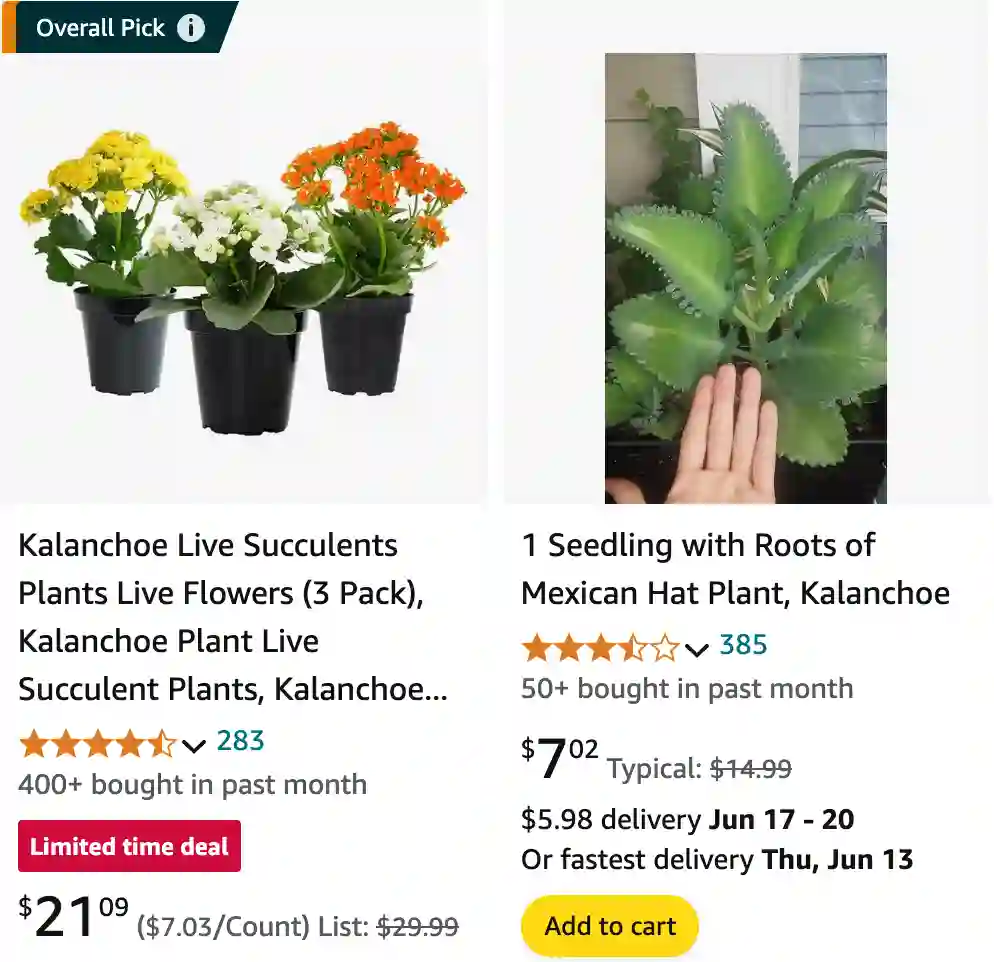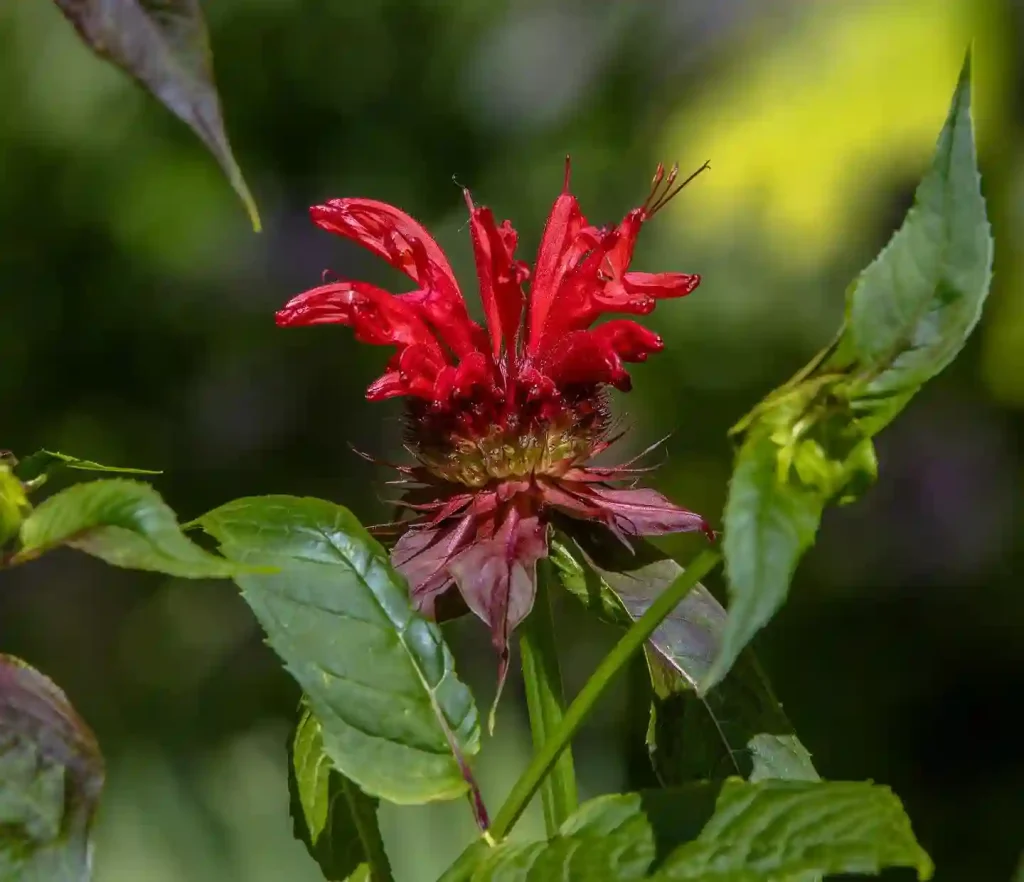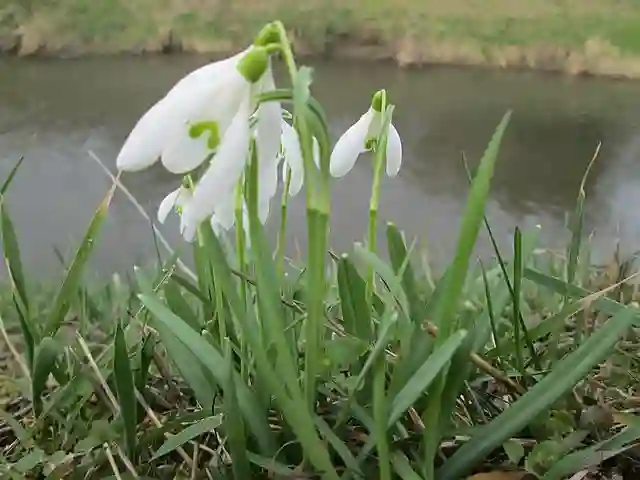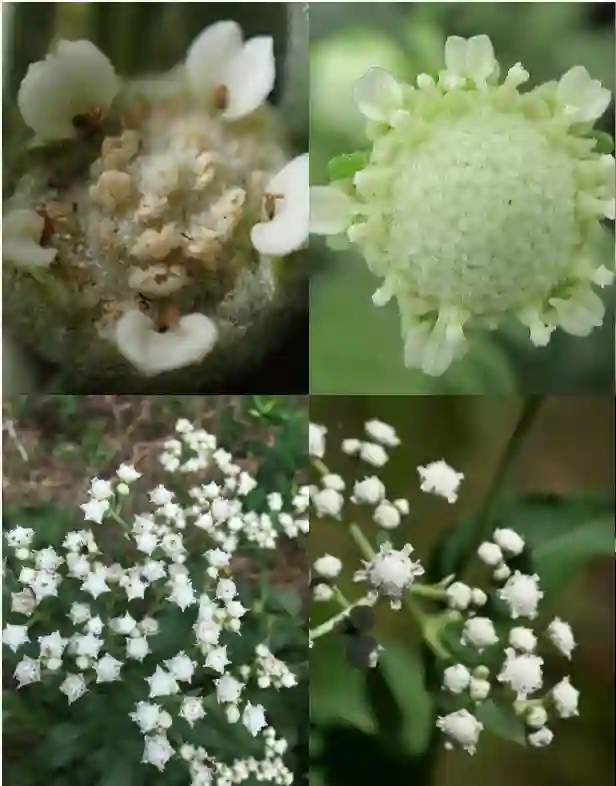
Kalanchoe: Your Guide to the Easy-Care Flowering Succulent
The Kalanchoe, with its vibrant blooms and plump, architectural leaves, is a popular choice for home gardeners. But between its exotic name and unique appearance, you might have some questions. Fear not, fellow plant enthusiast! This guide will answer all your burning Kalanchoe queries.
What is Kalanchoe?
Kalanchoe is a genus of flowering succulents belonging to the Crassulaceae family. These sun-loving plants come in a variety of shapes and sizes, with some boasting cascading teardrop leaves and others sporting upright, scalloped foliage. The star of the show, however, is the Kalanchoe’s clusters of brightly colored flowers, which can range from red and orange to pink, yellow, and even purple.
Kalanchoe species
- Kalanchoe adelae Raym.-Hamet
- Kalanchoe aliciae Raym.-Hamet
- Kalanchoe alternans (Vahl) Pers.
- Kalanchoe alticola Compton
- Kalanchoe ambolensis Humbert
- Kalanchoe angolensis N.E.Br.
- Kalanchoe antennifera Desc.
- Kalanchoe apiifolia D.-P.Klein, Shtein & Callm.
- Kalanchoe arborescens Humbert
- Kalanchoe aromatica H.Perrier
- Kalanchoe aubrevillei Raym.-Hamet ex Cufod.
- Kalanchoe × auriculata (Raadts) V.V.Byalt
- Kalanchoe ballyi Raym.-Hamet ex Cufod.
- Kalanchoe beauverdii Raym.-Hamet
- Kalanchoe beharensis Drake
- Kalanchoe benbothae Gideon F.Sm. & N.R.Crouch
- Kalanchoe bentii C.H.Wright ex Hook f.
- Kalanchoe berevoensis Rebmann
- Kalanchoe bergeri Raym.-Hamet & H.Perrier
- Kalanchoe bhidei T.Cooke
- Kalanchoe bipartita Chiov.
- Kalanchoe blossfeldiana Poelln. Plant FAQs: Flaming Katy – Kalanchoe Blossfeldiana
- Kalanchoe bogneri Rauh
- Kalanchoe boisii Raym.-Hamet & H.Perrier
- Kalanchoe boranae Raadts
- Kalanchoe bouvetii Raym.-Hamet & H.Perrier
- Kalanchoe brachyloba Welw. ex Britten
- Kalanchoe bracteata Scott Elliot
- Kalanchoe brevicalyx (Raym.-Hamet & H.Perrier) Gideon F.Sm. & Figueiredo
- Kalanchoe briquetii Raym.-Hamet
- Kalanchoe campanulata (Baker) Baill.
- Kalanchoe ceratophylla Haw.
- Kalanchoe chapototii Raym.-Hamet & H.Perrier
- Kalanchoe cherukondensis Subba Rao & Kumari
- Kalanchoe chevalieri Gagnep.
- Kalanchoe citrina Schweinf.
- Kalanchoe costantinii Raym.-Hamet
- Kalanchoe craibii Raym.-Hamet
- Kalanchoe crenata (Andrews) Haw.
- Kalanchoe crouchii Gideon F.Sm. & Figueiredo
- Kalanchoe crundallii I.Verd.
- Kalanchoe curvula Desc.
- Kalanchoe cymbifolia Desc.
- Kalanchoe daigremontiana Raym.-Hamet & H.Perrier
- Kalanchoe darainensis D.-P.Klein & Callm.
- Kalanchoe decumbens Compton
- Kalanchoe deficiens (Forssk.) Asch. & Schweinf.
- Kalanchoe delagoensis Eckl. & Zeyh.
- Kalanchoe densiflora Rolfe
- Kalanchoe × descoingsii Shtein, Gideon F.Sm. & J.Ikeda
- Kalanchoe dineshii Syam Radh & Nampy
- Kalanchoe dinklagei Rauh
- Kalanchoe dyeri N.E.Br.
- Kalanchoe elizae A.Berger
- Kalanchoe eriophylla Hils. & Bojer ex Tul.
- Kalanchoe × estrelae Gideon F.Sm.
- Kalanchoe fadeniorum Raadts
- Kalanchoe farinacea Balf.f.
- Kalanchoe faustii Font Quer
- Kalanchoe fedtschenkoi Raym.-Hamet & H.Perrier
- Kalanchoe fernandesii Raym.-Hamet
- Kalanchoe × flaurantia Desc.
- Kalanchoe gastonis-bonnieri Raym.-Hamet & H.Perrier
- Kalanchoe germanae Raym.-Hamet ex Raadts
- Kalanchoe gideonsmithii N.R.Crouch & Figueiredo
- Kalanchoe glaucescens Britten
- Kalanchoe globulifera H.Perrier
- Kalanchoe gracilipes (Baker) Baill.
- Kalanchoe grandidieri Baill.
- Kalanchoe grandiflora Wight & Arn.
- Kalanchoe guignardii Raym.-Hamet & H.Perrier
- Kalanchoe × gunniae Gideon F.Sm. & Figueiredo
- Kalanchoe hametiorum Raym.-Hamet
- Kalanchoe hauseri Werderm.
- Kalanchoe hildebrandtii Baill.
- Kalanchoe hirta Harv.
- Kalanchoe × houghtonii D.B.Ward
- Kalanchoe humifica Desc.
- Kalanchoe humilis Britten
- Kalanchoe hypseloleuce Friis & M.G.Gilbert
- Kalanchoe inaurata Desc.
- Kalanchoe inopinatum Rebmann
- Kalanchoe integra (Medik.) Kuntze
- Kalanchoe integrifolia Baker
- Kalanchoe jongmansii Raym.-Hamet & H.Perrier
- Kalanchoe klopperae Gideon F.Sm. & Figueiredo
- Kalanchoe krigeae Gideon F.Sm. & Figueiredo
- Kalanchoe laciniata (L.) DC.
- Kalanchoe laetivirens Desc.
- Kalanchoe lanceolata (Forssk.) Pers.
- Kalanchoe lateritia Engl.
- Kalanchoe latisepala N.E.Br.
- Kalanchoe laxiflora Baker
- Kalanchoe leblanciae Raym.-Hamet
- Kalanchoe lindmanii Raym.-Hamet
- Kalanchoe linearifolia Drake
- Kalanchoe lobata R.Fern.
- Kalanchoe × lokarana Desc.
- Kalanchoe longiflora Schltr. ex J.M.Wood
- Kalanchoe longifolia E.T.Geddes
- Kalanchoe lubangensis R.Fern.
- Kalanchoe luciae Raym.-Hamet
- Kalanchoe macrochlamys H.Perrier
- Kalanchoe mandrarensis Humbert
- Kalanchoe manginii Raym.-Hamet & H.Perrier
- Kalanchoe marmorata Baker
- Kalanchoe marnieriana H.Jacobsen ex L.Allorge
- Kalanchoe maromokotrensis Desc. & Rebmann
- Kalanchoe migiurtinorum Cufod.
- Kalanchoe millotii Raym.-Hamet & H.Perrier
- Kalanchoe miniata Hils. & Bojer ex Tul.
- Kalanchoe mitejea Leblanc & Raym.-Hamet
- Kalanchoe montana Compton
- Kalanchoe mortagei Raym.-Hamet & H.Perrier
- Kalanchoe ndotoensis L.E.Newton
- Kalanchoe neglecta Toelken
- Kalanchoe nyikae Engl.
- Kalanchoe obtusa Engl.
- Kalanchoe olivacea Dalzell
- Kalanchoe orgyalis Baker
- Kalanchoe paniculata Harv.
- Kalanchoe pareikiana Desc. & Lavranos
- Kalanchoe peltata (Baker) Baill.
- Kalanchoe peltigera Desc.
- Kalanchoe perrieri Shtein, Gideon F.Sm. & D.-P.Klein
- Kalanchoe peteri Werderm.
- Kalanchoe petitiana A.Rich.
- Kalanchoe pinnata (Lam.) Pers.
- Kalanchoe × poincarei Raym.-Hamet & H.Perrier
- Kalanchoe porphyrocalyx (Baker) Baill.
- Kalanchoe prasina N.E.Br.
- Kalanchoe prittwitzii Engl.
- Kalanchoe prolifera (Bowie ex Hook.) Raym.-Hamet
- Kalanchoe pseudocampanulata Mannoni & Boiteau
- Kalanchoe pubescens Baker
- Kalanchoe pumila Baker
- Kalanchoe quadrangularis Desc.
- Kalanchoe quartiniana A.Rich.
- Kalanchoe rebmannii Desc.
- Kalanchoe × rechingeri Raym.-Hamet ex Rauh & Hebding
- Kalanchoe rhombopilosa Mannoni & Boiteau
- Kalanchoe × richaudii Desc.
- Kalanchoe robusta Balf.f.
- Kalanchoe rolandi-bonapartei Raym.-Hamet & H.Perrier
- Kalanchoe rosea C.B.Clarke
- Kalanchoe rosei Raym.-Hamet & H.Perrier
- Kalanchoe rotundifolia (Haw.) Haw.
- Kalanchoe rubella (Baker) Raym.-Hamet
- Kalanchoe salazarii Raym.-Hamet
- Kalanchoe sanctula Desc.
- Kalanchoe scandens H.Perrier
- Kalanchoe scapigera Welw. ex Britten
- Kalanchoe schimperiana A.Rich.
- Kalanchoe schizophylla (Baker) Baill.
- Kalanchoe schliebenii Werderm.
- Kalanchoe serrata Mannoni & Boiteau
- Kalanchoe sexangularis N.E.Br.
- Kalanchoe stearnii Raym.-Hamet
- Kalanchoe stenosiphon Britten
- Kalanchoe streptantha Baker
- Kalanchoe suarezensis H.Perrier
- Kalanchoe subrosulata Thulin
- Kalanchoe synsepala Baker
- Kalanchoe tachingshuii S.S.Ying
- Kalanchoe tashiroi Yamam.
- Kalanchoe teixeirae Raym.-Hamet ex R.Fern.
- Kalanchoe tenuiflora Desc.
- Kalanchoe tetramera E.T.Geddes
- Kalanchoe tetraphylla H.Perrier
- Kalanchoe thyrsiflora Harv.
- Kalanchoe tomentosa Baker
- Kalanchoe torrejacqii Shtein & Gideon F.Sm.
- Kalanchoe tuberosa H.Perrier
- Kalanchoe uniflora (Stapf) Raym.-Hamet
- Kalanchoe usambarensis Engl. & Raym.-Hamet
- Kalanchoe variifolia (Guillaumin & Humbert) Shtein, D.-P.Klein & Gideon F.Sm.
- Kalanchoe velutina Welw. ex Britten
- Kalanchoe viguieri Raym.-Hamet & H.Perrier
- Kalanchoe waldheimii Raym.-Hamet & H.Perrier
- Kalanchoe waterbergensis van Jaarsv.
- Kalanchoe welwitschii Britten
- Kalanchoe wildii Raym.-Hamet ex R.Fern.
- Kalanchoe winteri Gideon F.Sm., N.R.Crouch & Mich.Walters
- Kalanchoe yemensis (Deflers) Schweinf.
How to Care for Kalanchoe?
Kalanchoe’s popularity stems from its easy-going nature. Here’s the lowdown on Kalanchoe care:
- Light: Kalanchoe thrives in bright, indirect sunlight. Avoid harsh afternoon sun, which can scorch the leaves.
- Watering: These drought-tolerant plants despise soggy soil. Water deeply when the soil feels completely dry to the touch, then allow it to dry out again before repeating.
- Soil: Use a well-draining succulent or cactus mix to prevent root rot.
- Temperature: Kalanchoe prefers moderate temperatures between 60°F and 85°F (15°C and 29°C). Protect them from frost and cold drafts.
- Fertilizer: A light feeding every other month during the growing season with a balanced fertilizer diluted to half strength is sufficient.
How to Pronounce Kalanchoe?
This one can trip some people up! Kalanchoe is pronounced “ka-lan-KOH-wee.”
Is Kalanchoe Poisonous to Dogs?
Unfortunately, yes. Kalanchoe contains toxins that can be harmful to dogs if ingested. Keep your furry friends away from these plants.
How Often to Water Kalanchoe?
Remember, underwatering is always better than overwatering with Kalanchoe. Aim to water deeply once the soil dries out completely. During winter, you may only need to water every few weeks.
Do Kalanchoe Rebloom?
The good news is that Kalanchoe can definitely rebloom! With proper care, you can encourage your plant to flower again. We’ll delve into how to achieve this later.
Can You Plant Kalanchoe Outside?
Yes, you can plant Kalanchoe outdoors in warm climates (USDA zones 9-11). Choose a location with bright, indirect sunlight and well-draining soil. Bring your Kalanchoe indoors before the first frost.
How Big Do Kalanchoe Get?
The mature size of your Kalanchoe depends on the specific variety. Some types, like Kalanchoe blossfeldiana (commonly called the Christmas kalanchoe), grow to a compact 12 inches (30 cm) tall, while others, like Kalanchoe thyrsiflora (jade necklaces), can reach upwards of 3 feet (1 meter) in length.
How to Make Kalanchoe Bloom in Summer?
Kalanchoe naturally flowers in response to long nights and shorter days. To encourage summer blooms, simulate these conditions by providing your plant with 14-16 hours of darkness each night for 6-8 weeks. You can achieve this by covering the plant with a dark cloth during the evening hours.
How Often Do Kalanchoe Bloom?
A healthy Kalanchoe can bloom once or twice a year, depending on the variety and care it receives.
Is Kalanchoe Poisonous to Humans?
While not deadly, Kalanchoe can cause mild stomach upset if ingested. It’s best to keep these plants out of reach of children and pets.
Can Kalanchoe Survive Winter?
Kalanchoe can survive winter indoors as long as they are kept in a warm, brightly lit location. Avoid overwatering during this time.
Do Deer Eat Kalanchoe?
The good news for gardeners is that deer tend to leave Kalanchoe alone due to their somewhat unappetizing, succulent leaves.
How Long Do Kalanchoe Plants Live?
With proper care, Kalanchoe plants can live for several years, bringing you joy with their vibrant flowers and interesting foliage.
Is Kalanchoe Safe for Cats?
Just like with dogs, Kalanchoe is toxic to cats. Keep your feline companions away from these plants.
Why Isn’t My Kalanchoe Flowering?
There are a few reasons why your Kalanchoe might not be gracing you with its blooms. Here are the top culprits:
- Insufficient Light: Kalanchoe needs ample indirect sunlight to trigger flower bud formation. If your plant is tucked away in a dimly lit corner, it won’t receive the necessary light cues to bloom.
- Lack of Nighttime Darkness: Kalanchoe are short-day plants, meaning they flower in response to longer nights and shorter days. During the winter months, this comes naturally. But if your Kalanchoe is bathed in artificial light at night (even from a nearby lamp), it might not perceive the darkness needed to initiate flowering.
- Nutrient Deficiency: While Kalanchoe aren’t heavy feeders, a lack of essential nutrients can hinder flowering. Consider feeding your plant a balanced fertilizer diluted to half strength every other month during the growing season.
- Overwatering: Constantly soggy soil can stress your Kalanchoe and prevent it from putting its energy into flower production. Remember, underwatering is always preferable to overwatering with succulents.
- Immaturity: Younger Kalanchoe plants might take a year or two to mature enough to flower. Be patient and provide proper care, and your plant will eventually reward you with blooms.
Is Kalanchoe Edible?
While Kalanchoe isn’t technically poisonous to humans, it’s not considered edible either. The leaves have a somewhat bitter taste and may cause mild stomach upset if ingested. It’s best to admire these beauties with your eyes only and keep them out of reach of children and pets.
How to Propagate Kalanchoe?
The beauty of Kalanchoe is that they’re easy to propagate, allowing you to create more plants for yourself or share the joy with friends. You can propagate Kalanchoe through stem cuttings or leaf cuttings.
What to Plant with Kalanchoe?
Kalanchoe’s vibrant blooms and interesting foliage make them a versatile choice for container arrangements. Here are some ideas for companion plants:
- Succulents: Echeveria, Jade Plant, Aloe Vera
- Cacti: Prickly Pear Cactus, Rebutia (Crown Cactus)
- Herbs: Rosemary, Thyme, Oregano (in separate pots to avoid herb takeover)
By following these tips and providing your Kalanchoe with the right care, you can enjoy its unique beauty and cheerful blooms for years to come. Happy planting!
If i die, water my plants!



